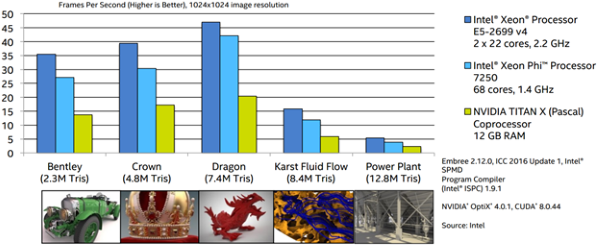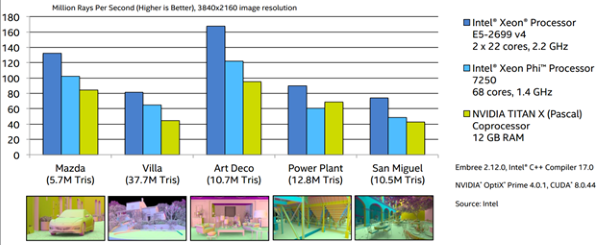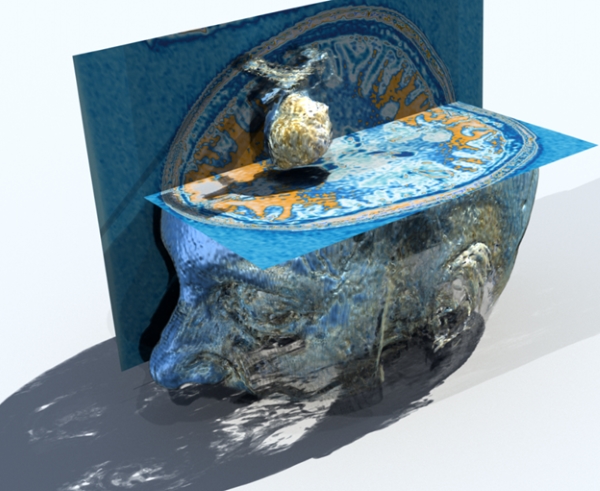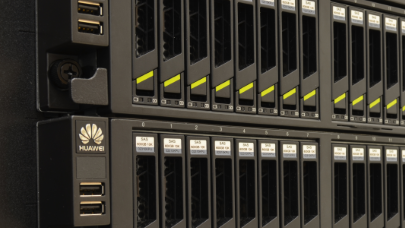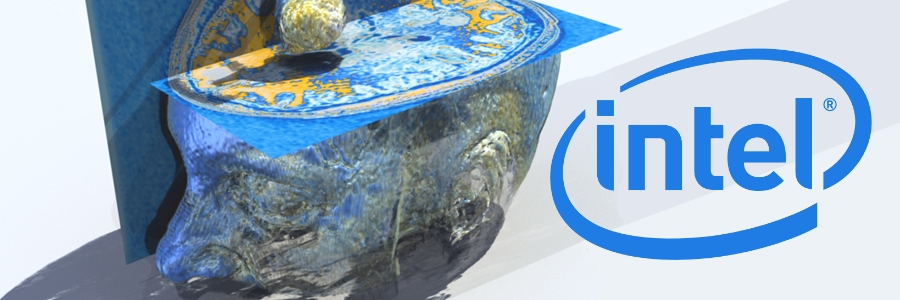
“Moore’s Law has caused the pendulum of visual computing in HPC to swing away from dedicated hardware and specialized software to general-purpose hardware and software packages”, Jim Jeffers, (Principal Engineer, Engineering Manager SW Defined Visualization, Intel) observed at the Intel HPC Developers Conference.
Since 2014, big data, I/O bottlenecks, power, TCO challenges, parallelism beyond eight cores, SIMD CPUs, and on-package High Bandwidth Memory (HBM) have stimulated a high degree of software innovation that has redefined visualization workflows. Software Defined Visualization (SDVis) is instantiated through general-purpose components like Intel Xeon and Intel Xeon Phi processors and the freely available Embree, OSPRay, and OpenSWR software packages that are part of Intel Scalable System Framework (Intel SSF). The performance of SDVis on multi- and many-core processors, Jeffers points out, shows that the pendulum of HPC visual computing has moved away from specialized solutions like GPUs and is now firmly pegged on general purpose computing solutions.
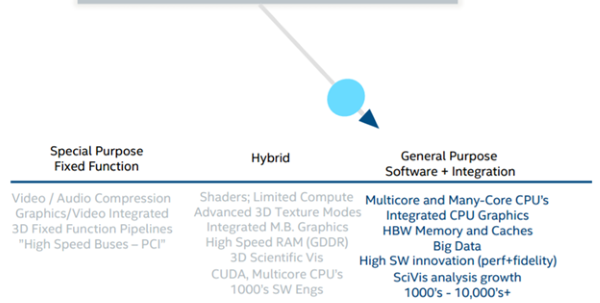
Figure 1: The pendulum of visual computing has moved to general purpose software + integration (Source: Intel)
“Moore’s Law has caused the pendulum of visual computing to swing away from dedicated hardware and specialized software to general-purpose hardware and software packages”, Jim Jeffers (Principal Engineer, Engineering Manager, SW Defined Visualization, Intel)
The popularity of general-purpose hardware and Software Defined Visualization (SDVis) is enabling Scientific Visualization analysis to leap over past barriers like graphics memory size and I/O bottlenecks. Looking forward, Jeffers indicates we should expect a high rate of innovation in visualization given the influx of people and API’s plus performance improvements. In particular, Jeffers considers in-situ visualization a requirement for large-scale visualization. In-situ visualization runs the visualization software on the same nodes that run the simulation (a benefit of using performant visualization packages the run on CPUs and that don’t require specialized hardware) thus eliminating expensive data movement and file-system operations.
The Embree Raytracing Foundation Library
The core visualization library on general purpose hardware for ray-tracing is the Embree ray tracing kernel library. (Raster visualization will be discussed in the context of OpenSWR below.) Embree provides a number of highly optimized and scalable ray tracing kernels that developers can use to speed photorealistic professional and scientific rendering applications. Jeffers points out that Embree provides the highest raytracing performance on CPUs with users reporting a 1.5x – 6x speedup over their prior implementations (Source: Intel).
The Embree kernels support the latest Intel CPUs and Instruction Set Architectures (ISAs) such as the wide vector AVX-512 instruction set. Embree is free and open sourced under the Apache 2.0 license. The Embree source code can be accessed at http://embree.github.com.
Jeffers highlighted the performance benefits of Embree on Intel processors over the latest generation NVIDIA Titan X (Pascal) GPU running the GPU-optimized Optix software on some representative data sets during his Intel HPC Developer Conference talk. For benchmark configuration information and legal disclaimers on the following results, see Jeffers talk, “Visualization Track Welcome and SdVIS Update”.
Not just a ‘one trick pony’, the performance benefits over GPUs are observed throughout Embree. For example, Jeffers presented the following to demonstrate the performance benefits of Embree on Intel hardware for diffuse path tracing performance.
Success can be measured by the user base as Embree has been adopted by many well-known organizations including Autodesk, DreamWorks, Ubisoft Motion Pictures, SURVICE Engineering, EasternGraphics, Simlab Soft, FluidRay, and Corona. The list is rapidly expanding as Pixar, Weta Digital, Activision, Chaos V-Ray, Ready At Dawn, FrostBite, EpicGames UnReal, High Mood, Blue Sky, Framestore, and many more have announced they are also utilizing Embree.
OSPRay for high-fidelity, scalable visualization
The OSPRay ray-tracing engine, built on top of Embree, was launched in June 2016. Jeffers notes that OSPRay targets cluster-wide rendering of surfaces (both polygonal and non-polygonal), volumes, volume rendering, and high-fidelity rendering and shading methods all packed up in an ‘easy-to-use’ rendering library.
The uptake over the past two quarters – since June 2016 – has been remarkable and spans a global user base of scientists as organizations such as the University of Cambridge, TACC, Kitware, ParaView, VMD, VisIt, Ecole Polytechnique Federale De Lausanne, NASA, University of Utah, Argonne, VL3 and many others now use OSPRay.
Kitware in collaboration with Intel, for example, provided the following remarkably detailed brain tumor visualization for the Intel HPC Developer conference. This visualization runs interactively at 10-20 Frames per Second (FPS) on an Intel Xeon Phi processor cluster. The rendering includes ambient occlusion plus shadows.
OSPRay performance on an Intel Xeon processor relative to an NVIDIA Pascal TitanX GPU reflects the same performance trend that Jeffers’ highlighted in the preceding Embree benchmark results.
More around this topic...
© HPC Today 2024 - All rights reserved.
Thank you for reading HPC Today.

